London is renowned for its history and sights, and in particular its stunning architecture. From baroque façades and large domed ceilings, to more modern green roofs and floor-to-ceiling windows, there is a sight to behold, new and old, for anyone who comes across the capital’s many famous venues.
Whether an iconic Brutalist theatre or a late-20th century museum, each London destination has a magnificent story behind its creation.
Here are 13 unique buildings steeped in culture and tradition that can be appreciated both inside and out:
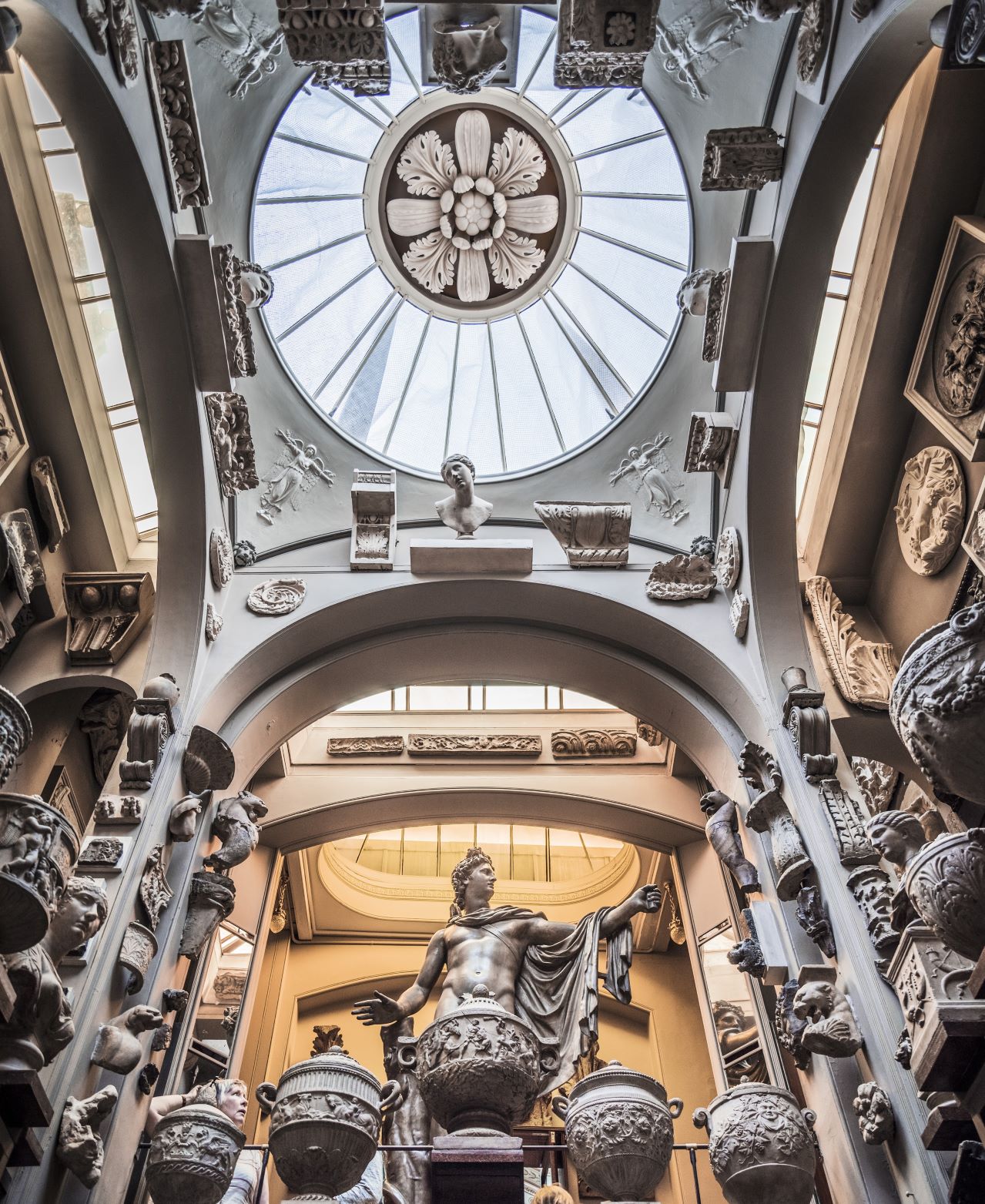
The world-renowned Sir John Soane’s Museum is one of the most iconic and influential buildings in the history of architecture. Created by Sir John Soane, one of Britain’s greatest architects, it was his home as well as his private museum. Soane’s collections are still arranged today as they were at the time of his death in 1837.
From the moment guests step through the door, they are transported back in time to the Regency era. The museum offers a wide range of tours where guests are guided through Sir John Soane’s extraordinary home. Led by one of the expert members of staff, guests can enjoy a fascinating insight into Soane’s work and family life, and learn the stories behind some of his many treasures.
The most famous spaces in the house are those at the rear of the museum – the Dome Area, Colonnade and Museum Corridor. These are mostly top-lit and provide some idea in miniature form of the innovative lighting contrived by Soane for the top-lit banking halls at the Bank of England.
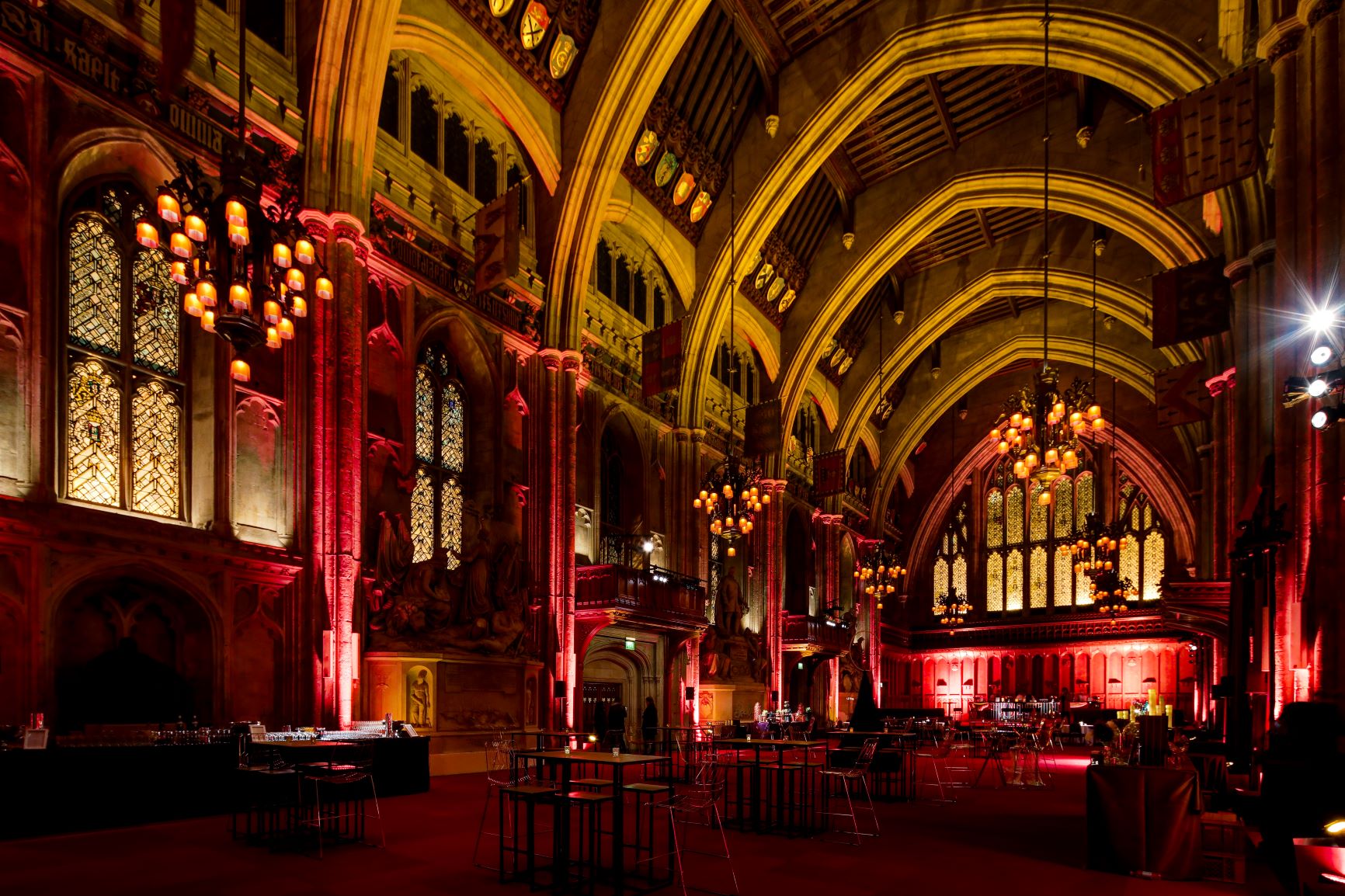
Copyright Matt Chung
With a Roman Amphitheatre dating back to AD70 and a majestic, medieval Great Hall (built 1411-1440), one thing Guildhall can boast about is a long architectural history.
A focal point of city life for over 1000 years, Guildhall’s most recent architectural addition is its Art Gallery, opened by HM The Queen in 1999 to replace the original 1886 gallery almost entirely destroyed during ‘the longest night’ of the Blitz in 1941. Much of the collection had, fortunately, been safely moved to storage by that time, including John Singleton Copley’s Defeat of the Floating Batteries of Gibraltar (1783-1791) – one of the largest oil paintings in Europe and, spanning two floors, around which the new gallery was built.
The Art Gallery’s architect, Richard Gilbert Scott, is the last in a long line of London architects associated with the site of Guildhall since the Middle Ages. Christopher Wren designed the church of St Lawrence Jewry in Guildhall Yard; George Dance the Younger created the existing, distinctive eighteenth century ‘Dance’ porch, and Gilbert Scott’s father, Sir Giles Gilbert Scott, of none other than red telephone box fame, designed Guildhall’s current roof – its fourth, the last having been destroyed in the Blitz on the night of 29th December 1940.
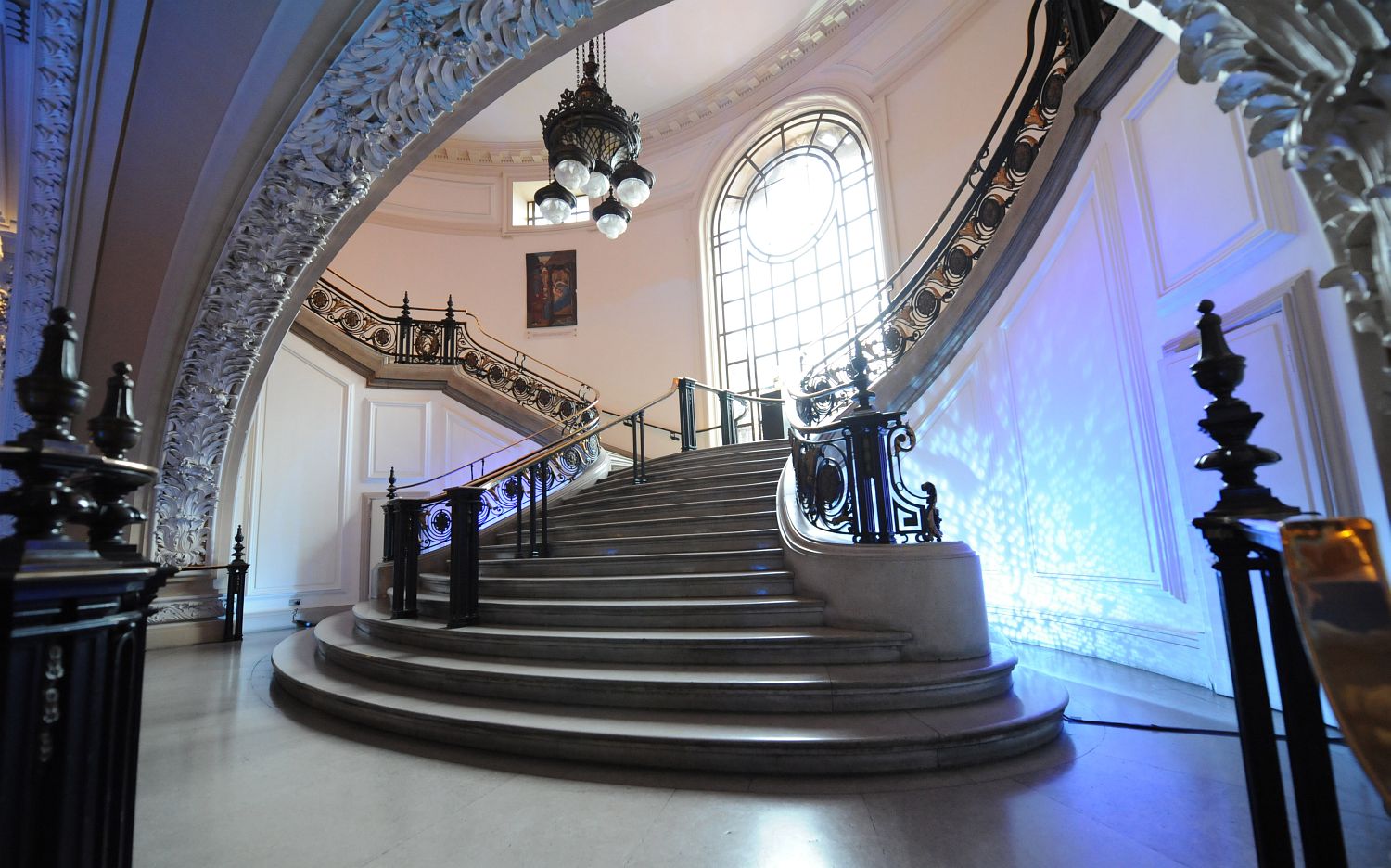
Central Hall Westminster, with its elaborate baroque architecture, was purpose built as a meeting place in 1912 by Henry Vaughan Lanchester and Edwin Alfred Rickards. This historically and architecturally significant building was intended to contrast with the Gothic architecture of Westminster Abbey standing opposite.
The central London venue has many notable architectural features including its Great Hall, considered a marvel of engineering in its time due to its self-supporting domed ceiling – the largest of its kind in Europe. At the top of the staircase the visitor is greeted by giant marble pillars in classical style and its VIP Balcony overlooks Westminster Abbey and the London skyline.
Within the Great Hall, which seats over 2,000 people, sits a magnificent 32ft, 4731-pipe organ which was built by Hill & Son in 1912. The venue has long been a meeting place for significant events such as the first ever meeting of the United Nations in 1946, and numerous dignitaries have graced its doors including Winston Churchill, Nelson Mandela and Mikhail Gorbachev. Now all kinds of events are held here including exhibitions, concerts, conferences and television broadcasts.
Copyright Will Lockyear
Located in the former Grade II* Commonwealth Institute, the Design Museum boasts John Pawson’s reclamation of iconic post-war British Modernism.
The museum features a stunning hyperbolic paraboloid roof and embodies Pawson’s vision of preserving and enhancing the original architectural features of the space, while also accommodating the needs of an ambitious museum programme.
The atrium is the Design Museum’s showcase evening event space, providing a dramatic, triple height venue with spectacular views of the iconic roof and surrounding architecture.
Ideal for evening drinks receptions, awards ceremonies and dinners, the atrium can also be hired for morning breakfast events and tours before public opening hours.
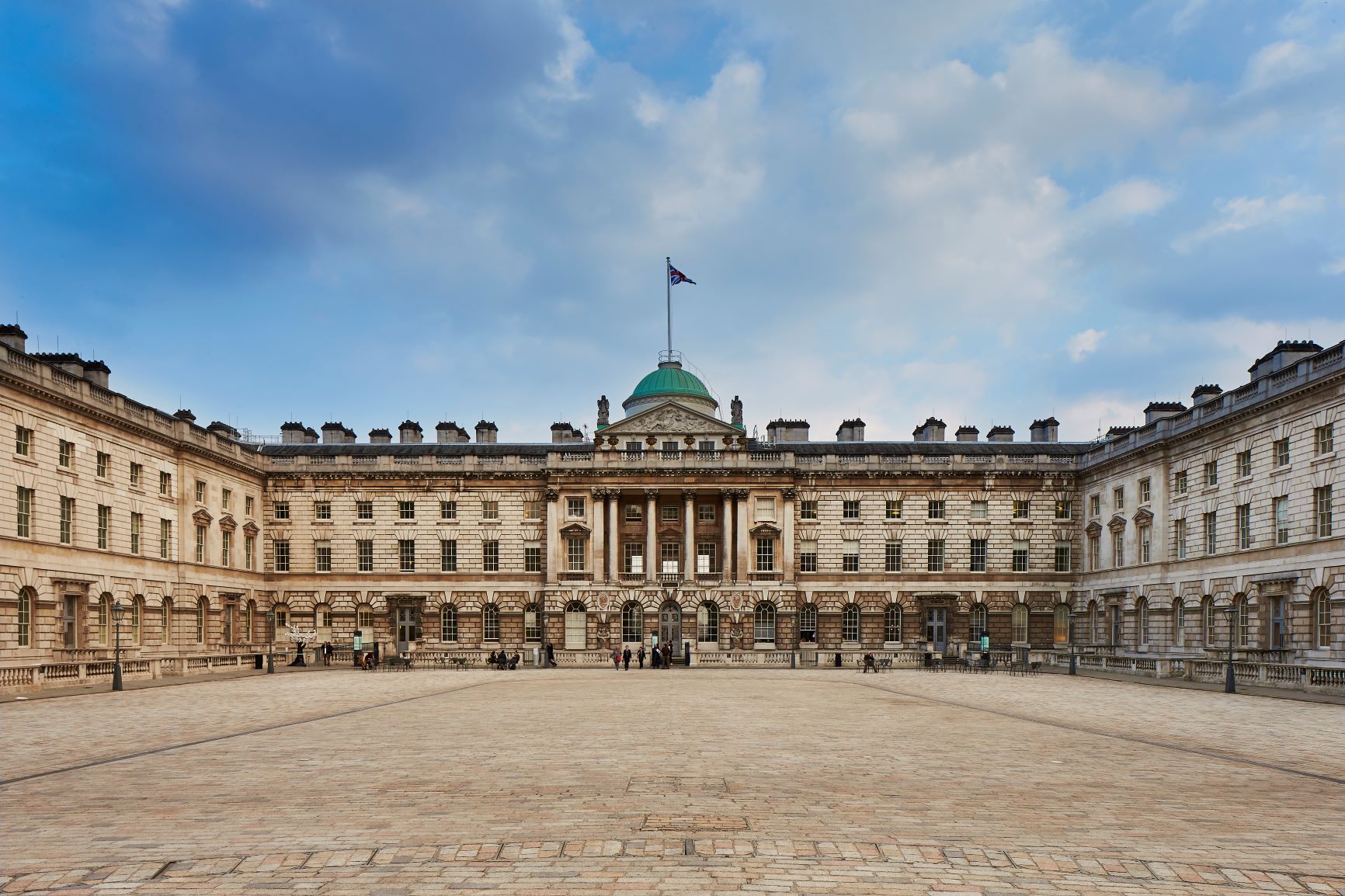
Located just a few steps from the bustling activity of the Strand, in the heart of London, Somerset House’s Edmond J. Safran Fountain Court is centred around the iconic fountains and surrounded on all sides by glorious 18th century buildings. Popular with the public throughout the year, the courtyard hosts some of the city’s best-loved events such as the Summer Series of live gigs, Film4 Summer Screen and Skate, the venue’s annual ice rink. Sir William Chambers’ neo-classical backdrop is the heart of Somerset House, offering a spectacular oasis for memorable events throughout the year.
Guests attending events at Somerset House can now experience the venue’s 450 years of history as part of an hour-long historical tour. They can discover evidence of Tudor intrigue and Georgian Enlightenment, scientific curiosity, naval power and extravagant entertainment. Overall, the tour covers the rich history of the neoclassical building and its place in modern culture - not only as a global platform for creativity but also as a popular location for Hollywood blockbusters and major TV series.
Tower Bridge was built over 125 years ago to ease road traffic while maintaining river access to the busy Pool of London docks. Constructed with giant moveable roadways that lift up for passing ships, it is to this day considered an engineering marvel, and beyond being one of London’s favourite icons, it is arguably one of the most famous and instantly recognisable structures in the entire world.
To generate ideas for the bridge, the "Special Bridge or Subway Committee" was formed in 1876, and opened the design for the new crossing to public competition. Over 50 designs were submitted for consideration, some of which are on display at the venue. It wasn't until October 1884 however, that Horace Jones, the City Architect, in collaboration with John Wolfe Barry, offered the chosen design for Tower Bridge as a solution.
The events team at this venue can offer insight into the history of the bridge through the stories of those that designed, constructed and maintained it, combining key facts with anecdotes delivered by knowledgeable guides when guests arrive at their welcome reception.
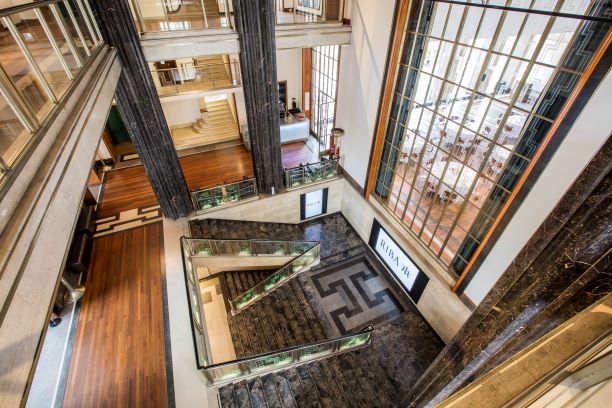
Copyright Andrew Hendry
The Royal Institute of British Architects
As well as being a world-renowned institute of architects, the Royal Institute of British Architects (RIBA) boasts award-winning conference and events facilities that blend beautiful design with an impressive history.
RIBA at 66 Portland Place is set in an architecturally significant building constructed in 1934 following an intense competition among leading architects. The open design incorporates floor-to-ceiling windows and views over London, creating an oasis of light and space, and boasts a stylish Art Deco backdrop. The event spaces celebrate the traditions and progress of the institute, immersing audiences in both architectural heritage and the future of design. For example, on either side of the buildings entrance stand two pillars with carved figures of the spirit of man and woman as creative forces of architecture by James Woodford.
RIBA was built initially due to a competition announcement to design a new headquarters to house one of the largest and growing architectural collections in the world. George Grey Wornum’s design won due to his successful handling of interior spaces and provision for the movement of large numbers of people. The current headquarters opened in 1934 and evidence of the building materials and architects used on the project are highlighted around the venue. For example, Wornum is shown in stone wall carvings in the grand Florence Hall.
Clients can incorporate a guided tour of the Grade II listed headquarters into their event as an added extra to delight guests. Led by a team of dedicated tour guides, guests can gain a unique insight into the history and design of this historic building.
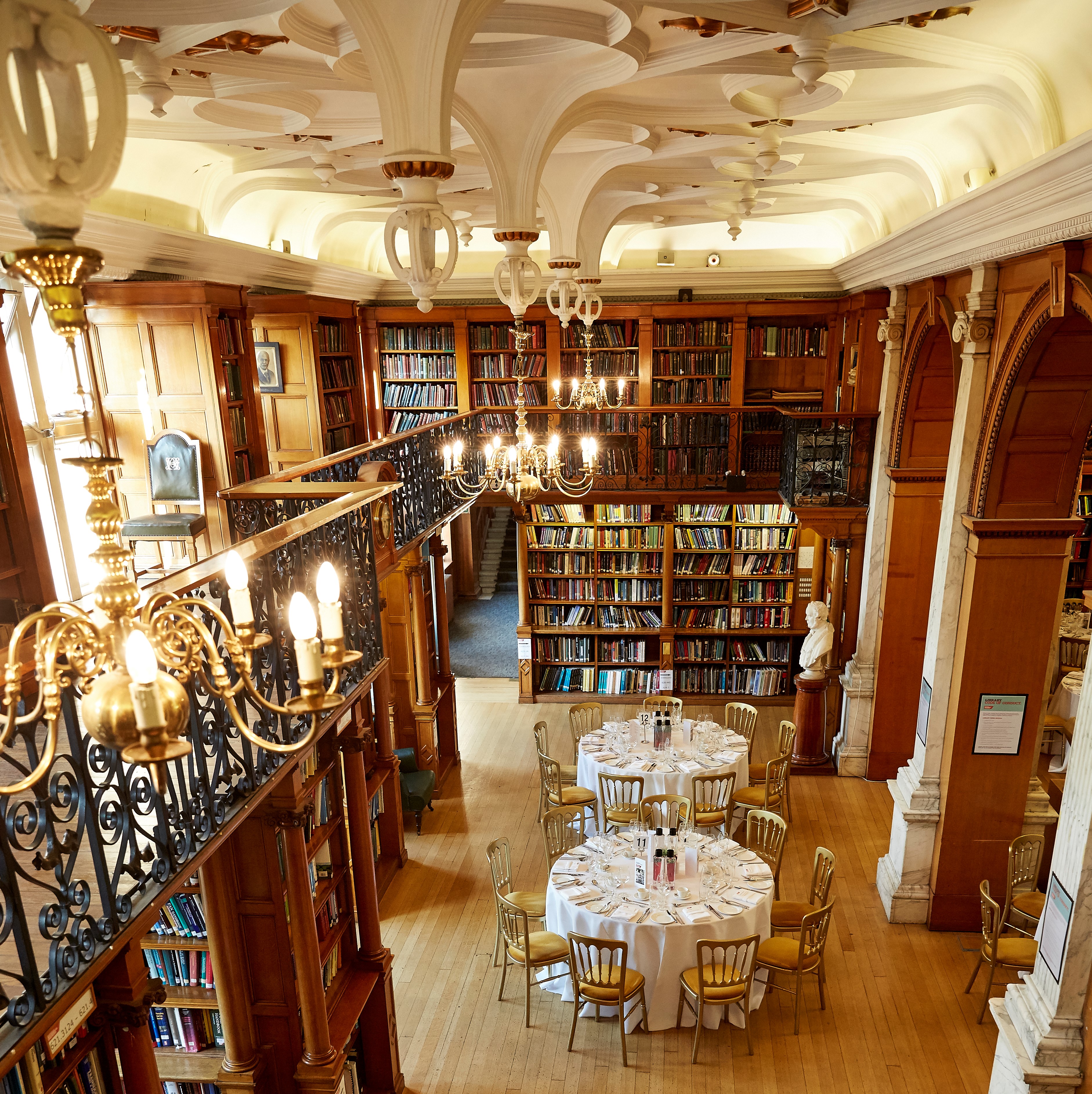
Home to the Institution of Mechanical Engineers, One Birdcage Walk has a number of exceptional architectural features which make the venue an ideal location to hold a dinner, party, or reception.
The Library space showcases a grand Jacobean-style ceiling with moulded plasterwork highlighted in gold. While the venue is available for evening hire, during the day it also happens to be one of the UK’s foremost engineering libraries.
Architect James Miller was appointed following a competition to design the extension to One Birdcage Walk. He had previously been a consultant on the interior designs for Cunard’s famous Lusitania and this influence is notable, particularly in the grand interior of the Council Room.
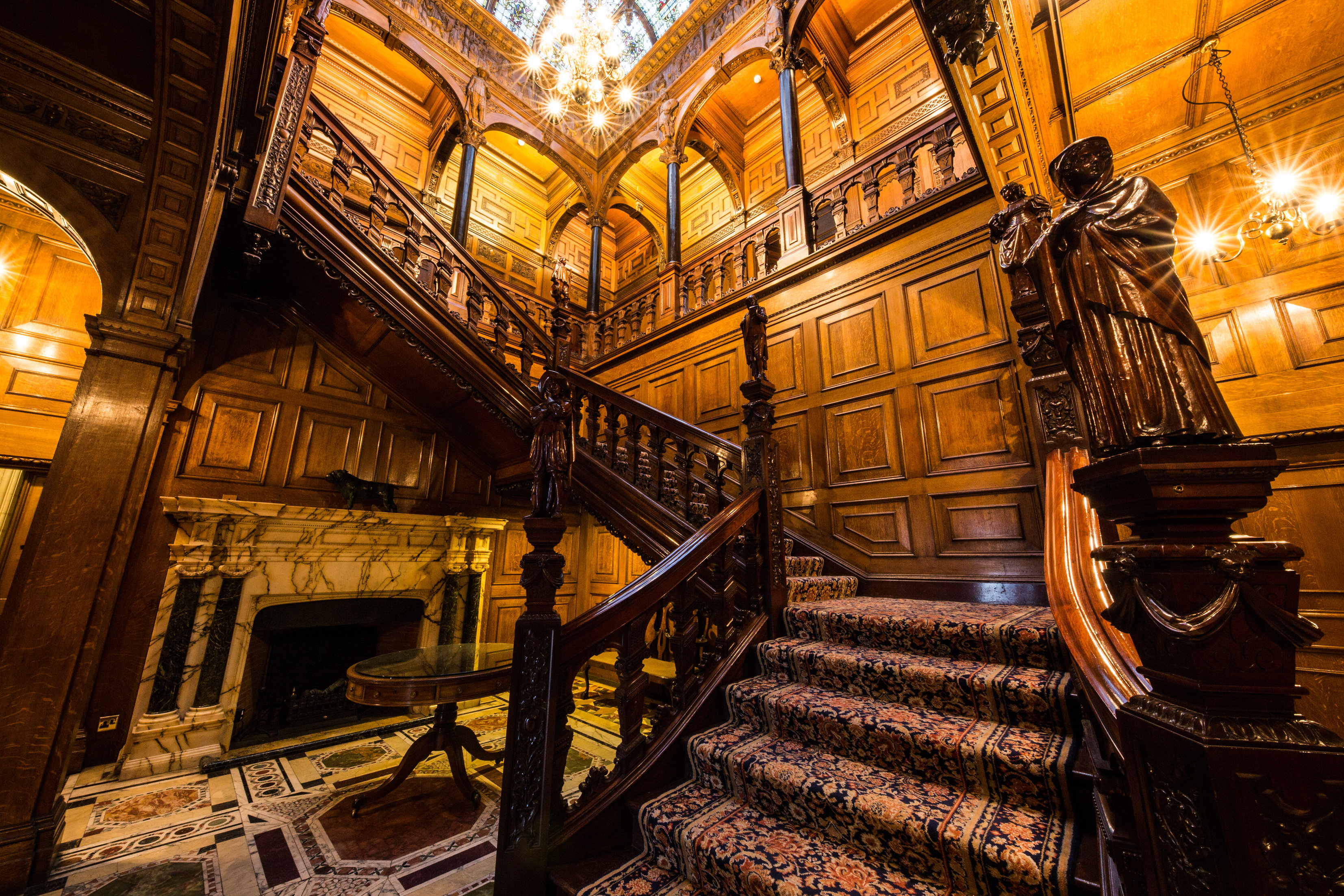
Copyright Noah at Two by Two
With its neo-Gothic grandeur and imposing crenulations, Two Temple Place’s splendour hides a wealth of secrets. Designed by renowned architect John Loughborough Pearson, the former Estate Office of William Waldorf Astor perfectly embodied the wealth and power of the richest man in the world. Yet underneath the lavish decoration lay two hidden and heavily protected strong rooms, a series of impenetrable safes and a private security vault for Astor himself, lined with steel plates and an elaborate steel door. Most important of all - of course - was the champagne safe, tucked away in Astor’s private library!
Guests today can be enthralled by one of the venue’s knowledgeable historians, who can tell tales of Astor’s time at the house and talk about the stunning stained-glass ceiling, rare marble flooring and gilded carvings. A cast of historical and literary characters line the staircase and Great Hall, so guests can dine whilst being watched over by Elizabeth I, Anne Boleyn, Machiavelli and Sir Walter Raleigh. It is truly an architectural feast for the eyes.
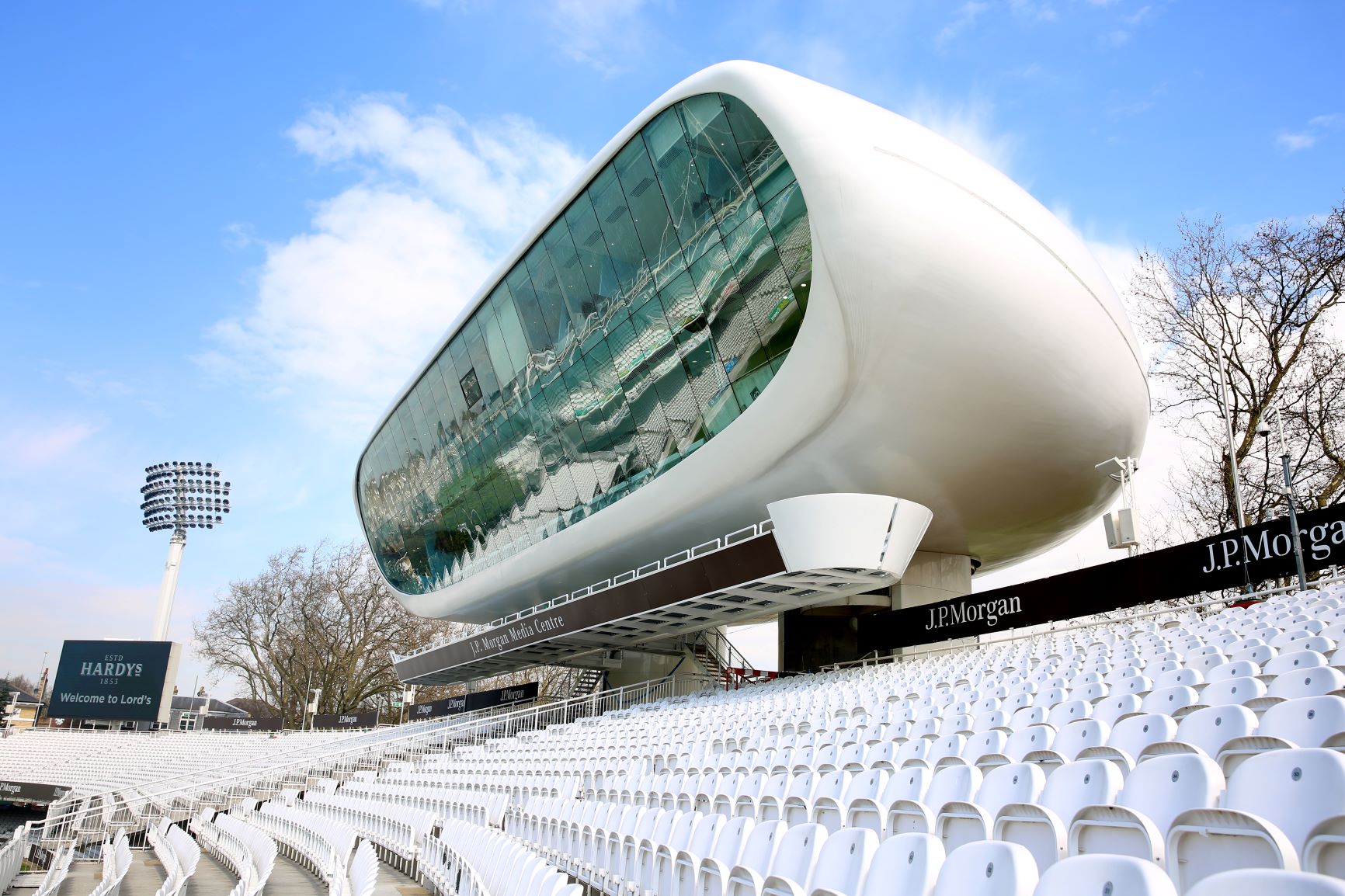
The architecturally significant buildings of Lord’s Cricket Ground set the scene of this iconic venue. The various stands designed by different architects have their own identity and contribute to the special character of the Ground, from the traditional to the ultra-modern.
The Grade II*-listed Pavilion was designed by Thomas Verity and built in the late 19th century. The Victorian building features elegant spaces and magnificent views of the RIBA Stirling Prize winning J.P. Morgan Media Centre. Built in a shipyard, and designed by Future Systems, it is a unique and modern structure. The state-of-the-art Warner Stand is the newest addition to the Ground, designed by Populous, who are known for their spectacular sporting venues. The design complements the character whilst having its own identity and impressive features.
Clients can enjoy all of these buildings as part of a Lord’s tour available as a package upgrade.
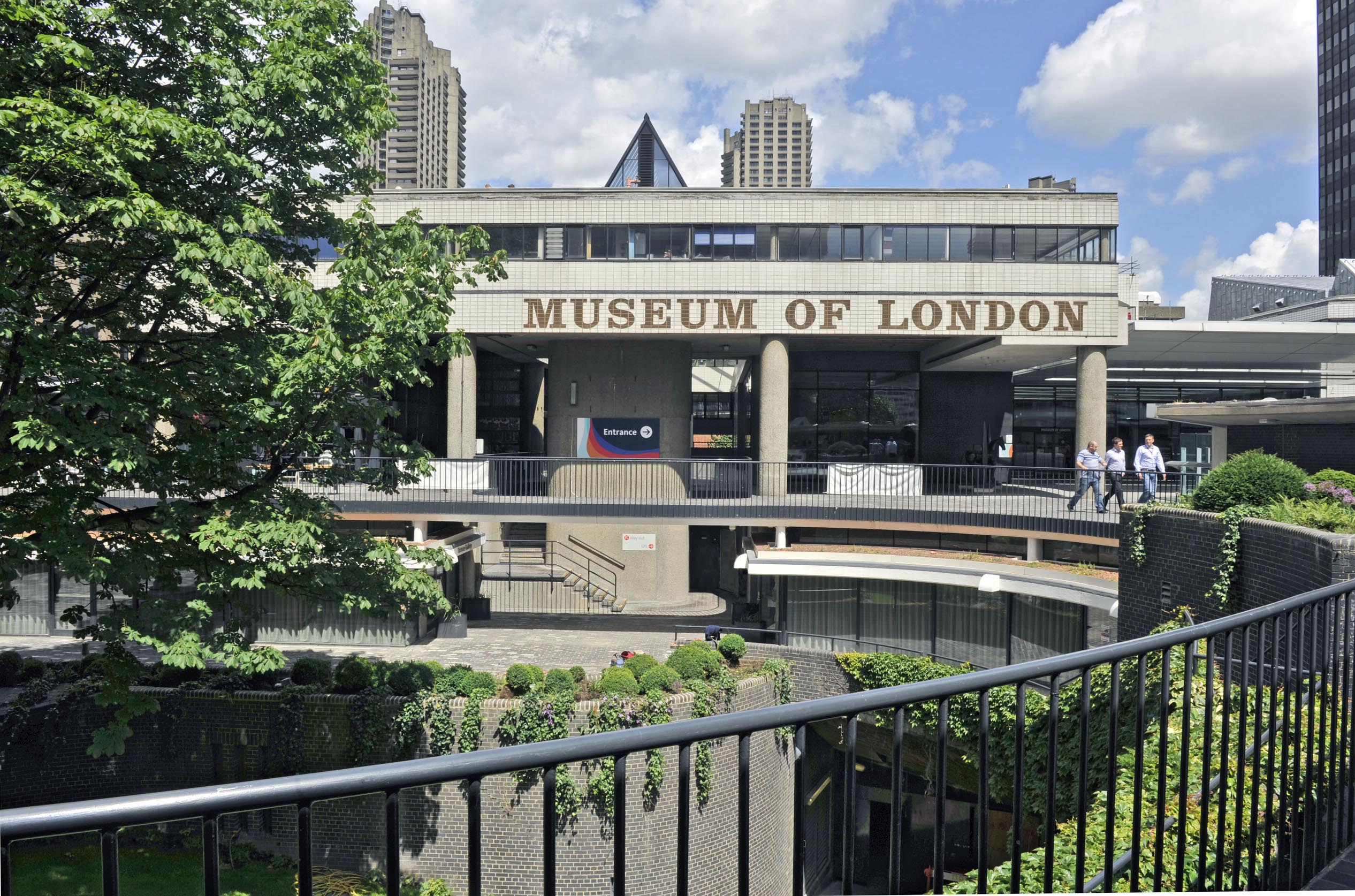
Designed by architectural duo Philip Powell and Hidalgo ‘Jacko’ Moya, the Museum of London is a veritable feast of architectural wonder. Despite constraints, the museum was the first building to open in the capital following the end of World War II, featuring two levels of exhibition spaces, a chronologically designed visitor thoroughfare and internal free-standing columns to allow for future expansion.
As well as the modernist architecture of the building, with its mixture of cubes and cylinders setting it apart from its Brutalist surroundings, the Museum of London is also home to the revolutionary architectural concept of green roofs, providing bio diversity for local wildlife and natural insulation for the building. It’s not just the exhibitions that are worth visiting – it’s the very building itself!
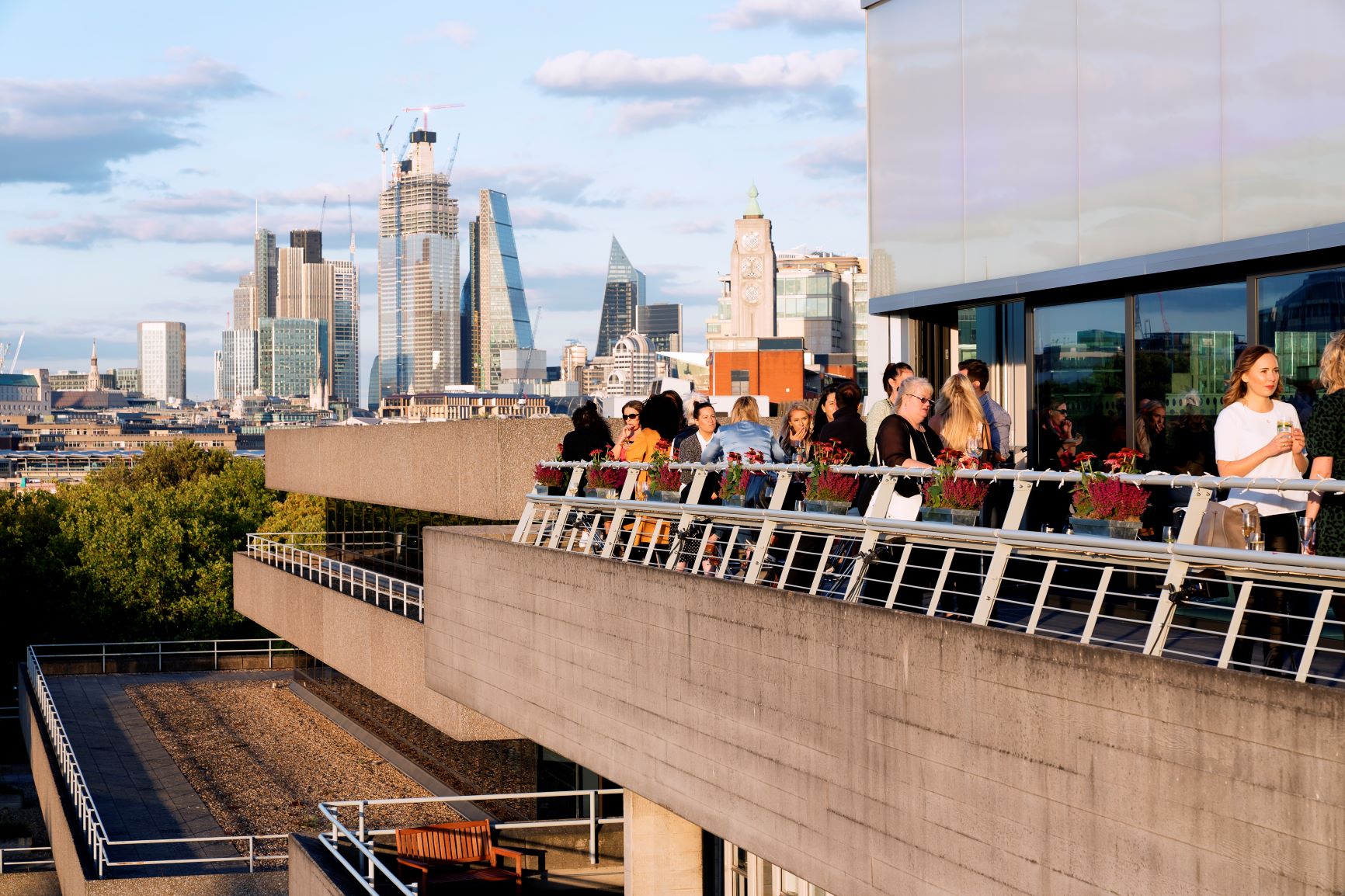
Copyright James Bellorini
Set within one of London’s most iconic Brutalist buildings, The Deck at the National Theatre offers a seriously cool setting for city events. Sliding glazed façades allow the installation to open up to the terrace creating a free-flowing space, flooding the entire venue with natural light and showcasing panoramic views over London and the River Thames.
Created from a palette of glass and aluminium, The Deck was designed to complement the geometries of Lasdun’s 1976 concrete masterpiece. One of the theatre’s distinctive concrete walls is visible within The Deck, creating a fluidity between the two buildings. A recreation of the theatre’s coffered ceilings reflects this connection further. The aesthetically pleasing venue is insulated with a timber-framed structure and is naturally ventilated, which helps reduce energy loads and enables year-round use for meetings, conferences and exclusive events.
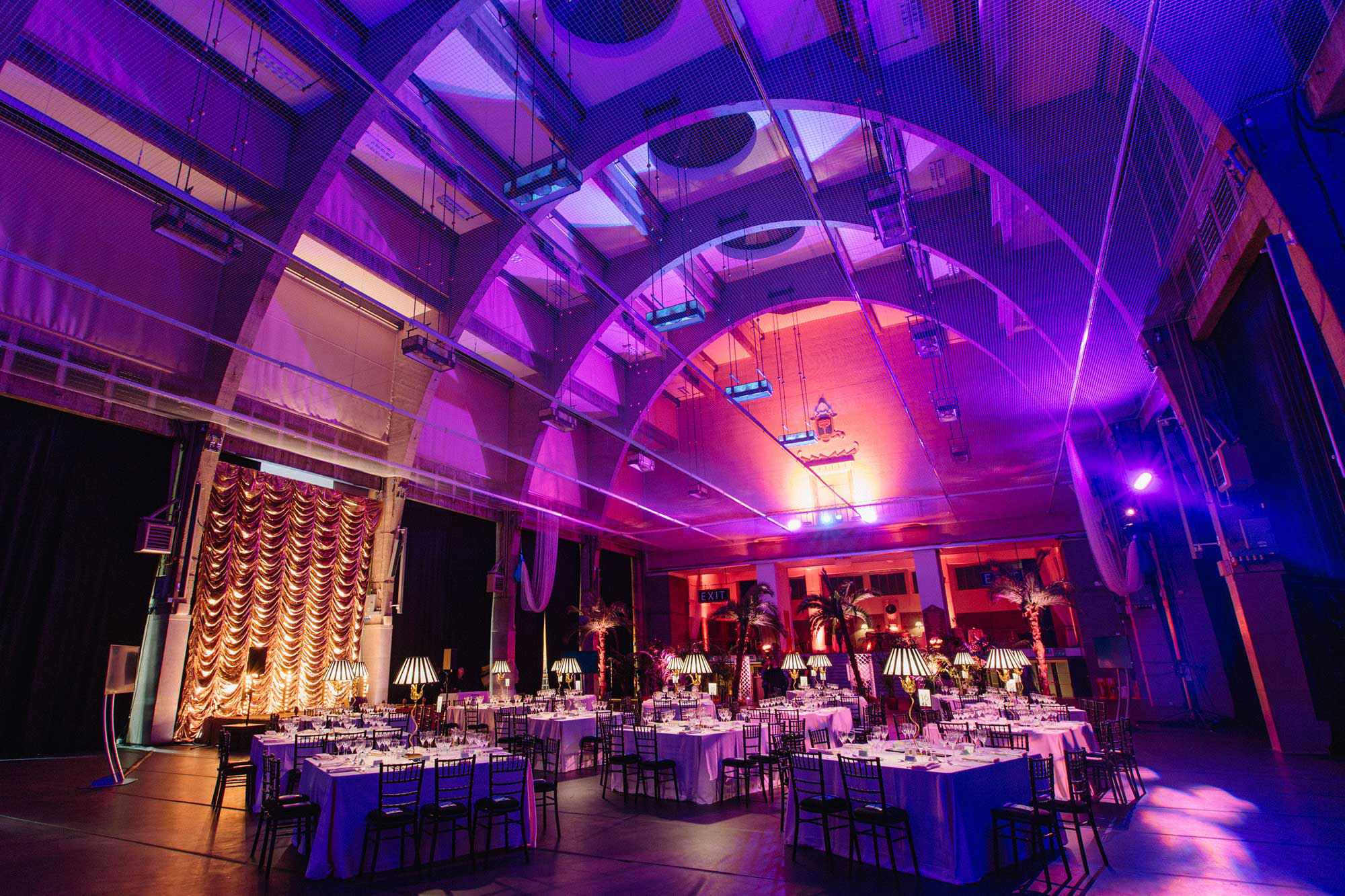
The Lindley Hall, originally known as The Old Hall, was designed by Edwin J Stubbs and constructed in 1904 with Arts & Crafts and Renaissance details following King Edward VII’s suggestion that the Royal Horticultural Society should have an exhibition hall for its botanical shows. Stubbs’ focused on achieving as much natural light as possible through a glass-vaulted roof, which is still a key character of the building, with Grade II listed status being given to the hall in 1970. The design of this extraordinary ceiling, 14 metres above the hall floor, enables up to 2 tonnes of weight to be suspended from each of its five iron arches, meaning that every square inch of the hall can be utilised.
Built in 1925, The Lawrence Hall (originally known as The New Hall) boasts an award-winning Art Deco interior and is one of the largest spaces in Westminster with 1,600 square metres and a capacity for 900 guests for dinner and 1,500 for a reception. Awarded a gold medal by the Royal Institution of British Architects for its dramatic, somewhat brutalist architecture, The Lawrence Hall was granted Grade II listed status in 1983.
Over the past 115 years, the halls have been a venue for change, hosting suffragette meetings, political events, medical nursing conferences and soldiers awaiting the call to arms. More recently, it has attracted governments, businesses, charities, educationalists, athletes, musicians and filmmakers to a range of commercial, consumer and charitable events.
